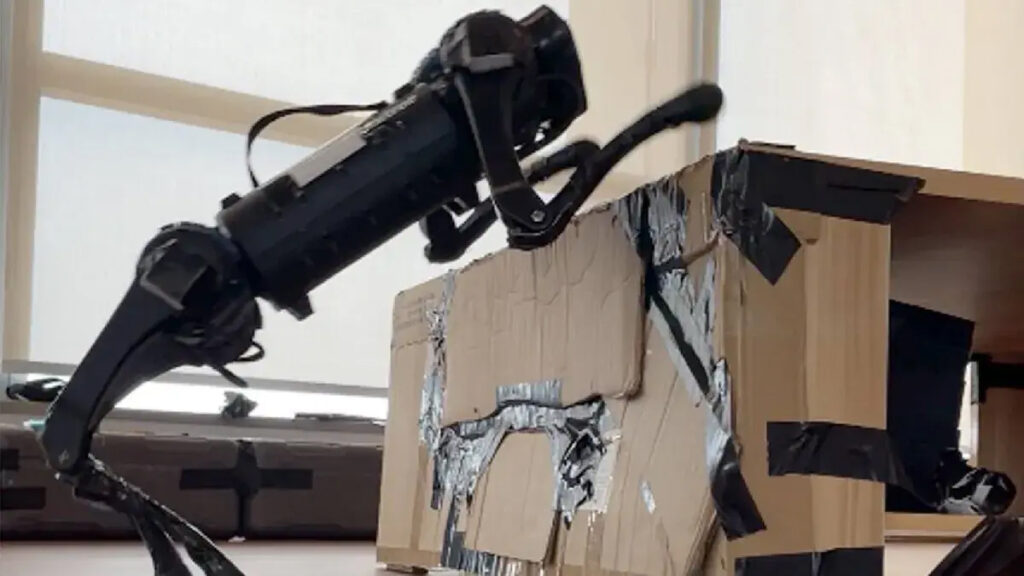The Future of Search and Rescue: Autonomous Robodogs with AI Brains
In many on-the-ground search and rescue operations and disaster relief, trained dogs have become heroes. They are small, can sniff people, and can crawl through small spaces. But in some areas and situations, the environment may be too risky for humans and dogs. Thus, the demand for disaster response robots increased. Today, several types of disaster relief robots assist first responders. There are water rescue robots, firefighting robots, drones, and land rescue robots. Most of these robots have the latest technology, such as GPS, multi-beam sonars, high-powered lights, daylight and infrared cameras, metal gauges, and more. Some of these robots can carry heavy weights that humans cannot do. However, these rescue robots are remotely controlled while humans trained to use them make the decisions.
Rescue robots with brain
Today, robots are almost indispensable, and they have become very valuable in search and rescue operations. Researchers and engineers are developing better and stronger robots to help first responders. They have also included artificial intelligence (AI) into the mix. One of the latest developments is the search and rescue dog from the collaborative work of AI researchers from Shanghai Qi Zhi Institute and Stanford University.
According to their press release, they developed a robodog that can squeeze through cracks, under low-hanging structures, jump across gaps, and scale tall objects. But their robots are different because they use their algorithm as their brain.
Assistant professor of computer science Chelsea Finn, explained that their robodogs are autonomous. Asst. Prof. Finn is also the senior author of the new peer-reviewed paper on robodogs. Moreover, they were impressed by the autonomy and range of complex skills their robot learned. The assistant professor also said they made two robodogs from different off-the-shelf, low-cost robots. The advantage of these machines is their complete autonomy.

Process of development
The research team leader said they combined control and perception. They used images from a depth camera placed on the robot and machine learning to every input to move the robot’s legs to get around, under, and over obstacles, as explained by a co-first author of the study, Zipeng Fu, a doctoral candidate in Asst. Prof. Finn’s laboratory and Shanghai Qi Zhi Institute’s Ziwen Zhuang.
In this capacity, their new robodogs are ideal for search and rescue missions in challenging environments. The new dogs can assist in locating and rescuing individuals, access confined spaces, and navigate rough terrain in disaster areas. They would also be helpful in defense and military operations, such as surveillance and reconnaissance, and other tasks that must be done in potentially hazardous situations for humans.
The co-author also mentioned that their new robot dogs have autonomy and vision. They have the athletic intelligence to assess the challenge. Further, they can self-select and perform parkour skills according to the moment’s demands. However, their robodog is not the first to show such athletic agility or parkour. However, Stanford University and Shanghai Qi Zhi Institute’s robodog is the first to combine a wide range of skills and self-sufficiency.
The success of the process
The team explained how they successfully produced an athletically intelligent robot dog. The first thing they developed and perfected was the algorithm. They used a computer model, which they later applied to the two robodogs they acquired. The robot dogs moved on to operate in any way they chose. They are then rewarded according to how well they performed in a process the team called reinforcement learning. For them, it is an intensely efficient procedure for the algorithm to learn how to effectively deal with a new difficulty decisively.
The researchers later conducted extensive tests using the actual robodogs to show their new agility strength, especially in difficult conditions. They used the robodogs’ vision sensors, power supplies, and computers that were currently available.
Based on the robodogs’ performance, their athletically intelligent robots could scale barriers more than 1.5 times their length. Further, the robots can maneuver around gaps smaller than their width and squeeze under obstacles 3/4 their height.
What the future holds
The team envisions that their autonomous robodogs with brains will have various applications, including assistance in construction sites, exploration of hazardous environments, and search and rescue missions. The robots’ ability to access hard-to-reach areas and navigate challenging terrains could enhance their effectiveness.
One of the main features of Stanford University’s new robodogs is their use of AI, which enables the robots to adapt and respond in real-time to changing situations.
The team also explained that using off-the-shelf robots rather than developing new ones allowed them to focus on developing the algorithm’s capabilities. Thus, they made the technology more scalable and accessible for further advancements. They also see a huge potential in the commercial use of their robodogs.
The team plans to use advances in graphics and 3D vision to add real-world data to its simulated environments for their system’s advanced learning. Ultimately, they want to raise the real-world autonomy of their algorithm to a new level.
